Unfolding the Ancient Tradition of Pottery Making
Pottery making is not just an art form; it’s a timeless tradition that has been woven into the fabric of human civilization for millennia. Imagine a world where clay was the primary medium for creating both functional and decorative items, a world where the hands of artisans molded earth into vessels that told stories of their culture. This ancient craft has its roots deeply embedded in various societies, each contributing unique techniques and styles that reflect their way of life. From the bustling streets of ancient Mesopotamia to the serene villages of Japan, pottery has served as a canvas for human expression and innovation.
The journey of pottery making is a fascinating tale of creativity and resourcefulness. Early potters experimented with local clays, discovering the transformative power of fire to harden their creations. These artisans were not just makers; they were innovators who paved the way for future generations. As we delve into the history of pottery, we uncover the various methods and materials that have evolved over time, revealing the profound significance pottery holds in both historical and contemporary contexts.
Today, pottery is experiencing a renaissance, where traditional techniques are being revitalized and blended with modern innovations. This article will explore the rich history, intricate techniques, and cultural significance of pottery making, highlighting its evolution and enduring relevance in contemporary society. So, whether you’re a seasoned potter or a curious beginner, let’s embark on this journey together and uncover the magic behind this ancient craft!
Pottery has been a vital part of human civilization for thousands of years. The earliest known pottery dates back to around 29,000 BCE, discovered in the Venus of Dolní Věstonice figurine in the Czech Republic. This section delves into its origins, tracing back to early cultures and their innovative techniques in clay crafting. From the ancient Egyptians who created functional wares to the Chinese who developed porcelain, the history of pottery is a testament to human ingenuity.
Understanding the various materials used in pottery is essential for anyone interested in the craft. The primary material, clay, comes in different types, each with unique properties that affect the pottery-making process. Potters also utilize glazes and various tools to create their distinctive works. In the following subsections, we will explore the types of clay, glazes, and tools that artisans employ.
Different types of clay have unique properties that affect the pottery-making process. Here’s a quick overview of the main types:
- Earthenware: Typically fired at lower temperatures, earthenware is porous and often used for decorative items.
- Stoneware: Fired at higher temperatures, stoneware is known for its durability and is often used for functional items.
- Porcelain: Renowned for its delicate beauty and strength, porcelain is often used for fine art and high-end tableware.
When comparing earthenware and stoneware, one can see distinct differences in their durability, firing temperatures, and applications in pottery making. Earthenware is more fragile and suited for decorative pieces, while stoneware is robust and perfect for everyday use. This contrast highlights the versatility of clay as a medium.
Porcelain is known for its delicate beauty and strength. This section examines its historical significance and the intricate techniques involved in its creation. Originating from China, porcelain represents the pinnacle of pottery making, often requiring skilled artisans to master its production. Its smooth, white finish and ability to hold fine details make it a favorite among collectors and artists alike.
Glazing is a crucial aspect of pottery, providing both aesthetics and functionality. Various glazing methods, such as dipping, spraying, and brushing, can dramatically alter the appearance and texture of pottery. The choice of glaze can enhance colors, create effects, and even add a protective layer, ensuring that the pottery remains functional and beautiful.
Pottery is more than just functional art; it reflects cultural identity. Across different societies, pottery embodies traditions, rituals, and social values. For instance, in many Indigenous cultures, pottery is an integral part of ceremonies and storytelling, serving as a vessel for both food and cultural heritage.
Many cultures incorporate pottery into their rituals and ceremonies. From ceremonial bowls used in religious practices to decorative items that celebrate life events, pottery plays a significant role in cultural practices. It serves as a tangible representation of beliefs and traditions, linking generations through shared heritage.
Pottery has significantly influenced various art forms. Its impact on visual arts, design, and contemporary artistic expressions cannot be overstated. Artists often draw inspiration from traditional pottery techniques, reinterpreting them in modern contexts, which keeps the craft alive and relevant.
Today, pottery continues to evolve with modern technologies. Innovations such as 3D printing and eco-friendly materials are reshaping the pottery landscape. Potters are now able to experiment with new techniques and designs, pushing the boundaries of what is possible in this ancient craft.
3D printing offers exciting possibilities for pottery design. This technology is being integrated into traditional practices, allowing for intricate designs that were once unimaginable. It opens up a new realm of creativity, enabling potters to experiment with forms and structures that challenge traditional notions of pottery.
Sustainability is becoming crucial in pottery making. Many artisans are turning to eco-friendly materials and practices that promote environmental responsibility. This shift not only benefits the planet but also encourages a deeper connection between the potter and their craft, fostering a sense of community and shared values.
Q: What is the best type of clay for beginners?
A: Earthenware is often recommended for beginners due to its ease of use and availability.
Q: Can pottery be both functional and decorative?
A: Absolutely! Many potters create pieces that serve both purposes, combining art with utility.
Q: How can I learn pottery?
A: Many community centers and art schools offer pottery classes for all skill levels, making it accessible for anyone interested.
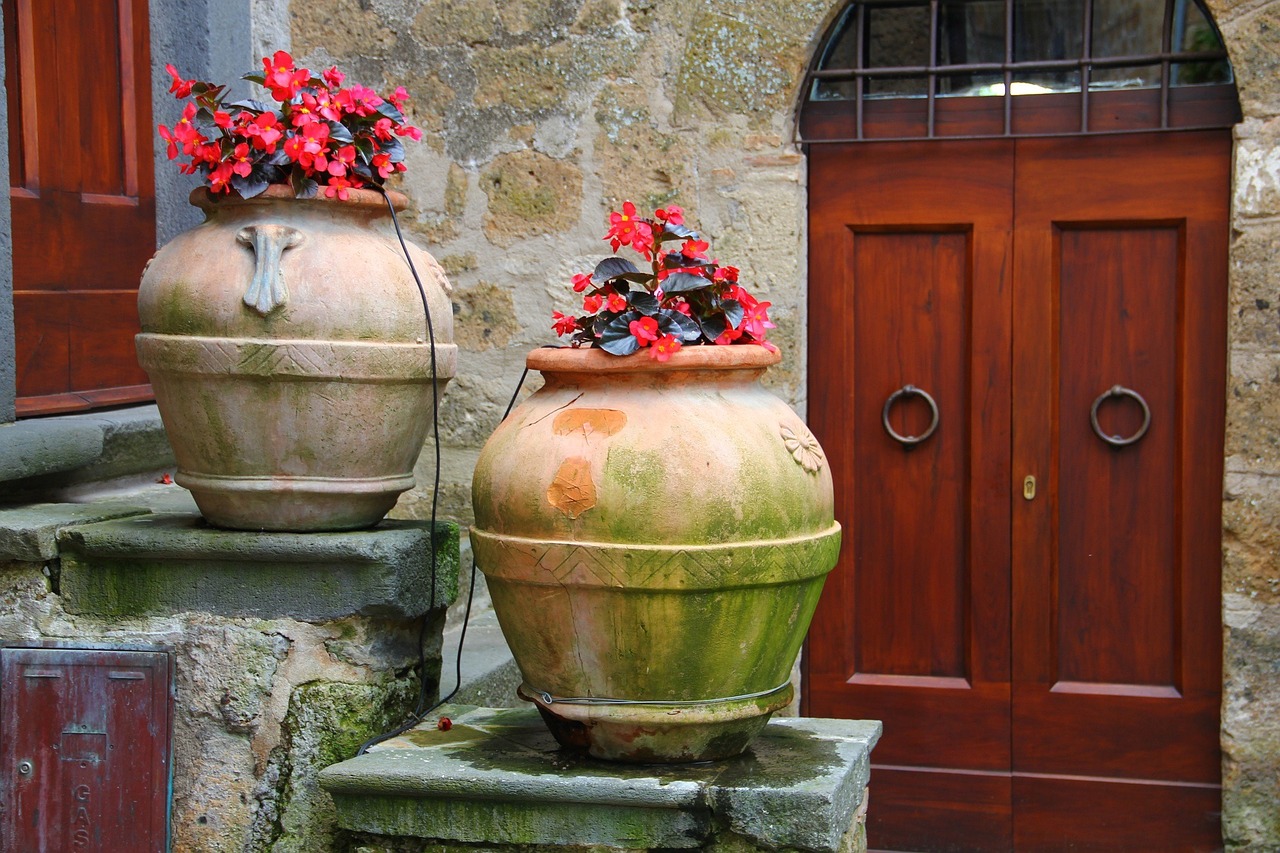
The Historical Roots of Pottery
Pottery has been a vital part of human civilization for thousands of years, serving not only as a functional necessity but also as a canvas for artistic expression. The journey of pottery begins in the Neolithic period, around 29,000 BCE, when early humans first discovered the art of shaping clay. Imagine a time when our ancestors, living in small communities, would gather around a fire, crafting clay vessels to store grains, water, and even food. This simple act marked the birth of pottery, transforming the way humans interacted with their environment.
As societies evolved, so did their pottery techniques. The earliest known pottery, discovered in what is now Ukraine, was made from clay and decorated with intricate patterns. These early artisans used their creativity to not only create functional items but also to reflect their cultural identity. Pottery became a means of storytelling, with designs that conveyed social status, beliefs, and local customs. In fact, many ancient cultures, including the Egyptians, Chinese, and Native Americans, have left behind a rich legacy of pottery that provides insight into their daily lives and spiritual practices.
Throughout history, different regions developed their unique styles and methods of pottery making. For instance, in ancient China, the invention of high-fired stoneware and porcelain revolutionized the craft. The Chinese perfected glazing techniques, creating stunningly beautiful pieces that were both durable and aesthetically pleasing. Meanwhile, in the Americas, indigenous peoples developed their own distinctive pottery styles, often using natural pigments to create vibrant colors and intricate designs.
To understand the historical roots of pottery, it’s essential to recognize the significance of the materials used. Different types of clay, such as earthenware, stoneware, and porcelain, have distinct properties that influenced their use and the techniques employed by artisans. The evolution of pottery is closely tied to the availability of these materials, as well as advancements in firing techniques. For example, the transition from open firing to kiln firing allowed for greater control over temperatures, resulting in stronger and more refined pottery.
Moreover, pottery has played a crucial role in trade and cultural exchange. As civilizations expanded, so did their pottery styles. The Silk Road, for instance, facilitated the exchange of goods and ideas, leading to the blending of different pottery techniques and aesthetics. This cross-cultural interaction enriched the art of pottery, paving the way for future innovations.
In summary, the historical roots of pottery are deeply intertwined with the development of human civilization. From its humble beginnings in ancient communities to its evolution into a sophisticated art form, pottery reflects our shared history and cultural heritage. As we continue to explore this ancient craft, we gain a deeper appreciation for the creativity and ingenuity of our ancestors, whose legacy lives on in the pottery we create and cherish today.
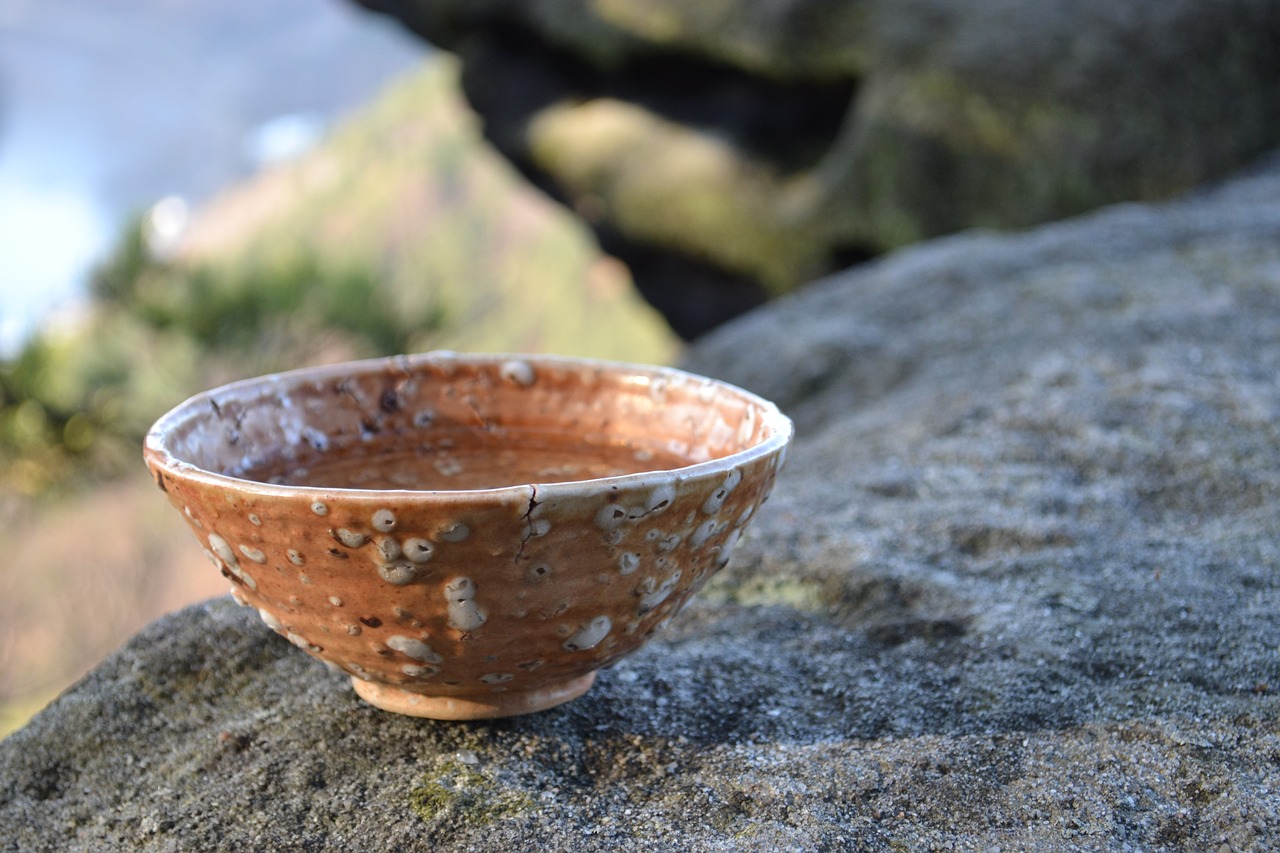
Materials Used in Pottery
When it comes to pottery making, the choice of materials is crucial. The right materials not only affect the final aesthetic but also the functionality and durability of the pieces. At the heart of pottery is clay, and understanding its different types is essential for any potter. Each type of clay brings its own unique qualities to the table, influencing how it behaves during shaping, firing, and glazing. Let's dive deeper into the primary materials that artisans utilize in their craft.
There are three main types of clay commonly used in pottery: earthenware, stoneware, and porcelain. Each type has distinct characteristics that cater to different artistic and functional needs:
- Earthenware: This is perhaps the most accessible type of clay, known for its low firing temperature and porous nature. It's often used for decorative pieces and is typically glazed to enhance its durability.
- Stoneware: Stoneware is fired at higher temperatures, making it more durable and less porous than earthenware. Its ability to retain heat makes it an excellent choice for functional items like dinnerware.
- Porcelain: Renowned for its delicate beauty and strength, porcelain requires a high firing temperature. It is often used for fine art pieces and high-quality dinnerware, showcasing intricate designs and translucency.
When comparing earthenware and stoneware, the differences are striking. Earthenware is generally softer and more fragile, making it less suitable for heavy use. On the other hand, stoneware's robustness allows it to withstand rough handling and is often preferred for everyday items. The firing temperatures also play a significant role: earthenware is typically fired between 1,830°F to 2,130°F, while stoneware requires a range of 2,190°F to 2,600°F. This higher temperature not only enhances its durability but also allows for a wider variety of glazes to be used.
Porcelain is often considered the pinnacle of pottery materials due to its unique combination of beauty and strength. Its origins trace back to ancient China, where it was revered for its delicate appearance and smooth texture. The creation of porcelain involves a meticulous process, including the use of kaolin clay, which is known for its fine particle size. This results in a product that is both lightweight and incredibly strong, making it ideal for intricate designs and fine art pieces. The craftsmanship involved in porcelain pottery is akin to painting on a canvas; each piece tells a story of the artist's skill and vision.
After shaping the clay, the next crucial step in pottery making is glazing. Glazes are a mixture of silica, fluxes, and alumina, which, when applied and fired, create a glass-like surface on the pottery. The glazing process not only adds color and texture but also enhances the durability of the piece. Different glazing techniques, such as dipping, brushing, and spraying, can yield various finishes—from glossy to matte—and can significantly alter the final look of the pottery.
Q: What is the best type of clay for beginners?
A: Earthenware is often recommended for beginners due to its forgiving nature and lower firing requirements.
Q: Can I use regular clay for pottery?
A: Regular clay may not withstand the high temperatures required for firing pottery. It’s best to use clay specifically formulated for pottery making.
Q: How do I know what glaze to use?
A: The choice of glaze depends on the type of clay and the desired finish. Experimenting with different glazes can help you discover what works best for your style.

Types of Clay
When it comes to pottery, the choice of clay is fundamental. Each type of clay possesses unique properties that significantly influence the pottery-making process, from shaping to firing. Understanding these differences can help both novice and experienced potters select the right clay for their artistic vision. In the world of pottery, we primarily encounter three main types of clay: earthenware, stoneware, and porcelain. Each of these has distinct characteristics that make them suitable for various applications.
Earthenware is perhaps the most accessible type of clay, often used for beginners. It is typically red or brown in color due to the iron content and is fired at lower temperatures (around 1,830 to 2,100°F). This type of clay is porous and not very durable, making it ideal for decorative pieces rather than functional ware. However, with the right glazing techniques, earthenware can be transformed into beautiful, colorful pieces that are perfect for home décor.
On the other hand, stoneware is known for its durability and versatility. It is fired at higher temperatures (around 2,190 to 2,600°F), which makes it non-porous and suitable for functional items like dinnerware and cookware. Stoneware is typically gray or brown and can be left unglazed for a rustic look or glazed for a polished finish. Its strength and ability to withstand thermal shock make it a favorite among potters who create everyday items.
Finally, we have porcelain, the fine art of pottery. Renowned for its delicate beauty, porcelain is fired at even higher temperatures (around 2,300 to 2,600°F) and is composed of kaolin, feldspar, and quartz. The result is a strong yet translucent material that can be beautifully glazed. Porcelain is often used for high-end dinnerware and artistic pieces, showcasing intricate designs and fine details. The craftsmanship involved in creating porcelain is extensive, requiring skill and precision to achieve the desired finish.
| Type of Clay | Firing Temperature | Characteristics | Common Uses |
|---|---|---|---|
| Earthenware | 1,830 - 2,100°F | Porous, low durability, colorful | Decorative pieces, flower pots |
| Stoneware | 2,190 - 2,600°F | Durable, non-porous, versatile | Dinnerware, cookware |
| Porcelain | 2,300 - 2,600°F | Strong, translucent, delicate | Fine dinnerware, artistic pieces |
In summary, the choice of clay is not merely a matter of preference; it significantly impacts the final outcome of the pottery. Whether you are crafting a rustic earthenware pot, a sturdy stoneware bowl, or an exquisite porcelain vase, understanding the types of clay and their properties can elevate your pottery-making experience. So, the next time you sit down to create, consider what type of clay will best suit your project and let your creativity flow!
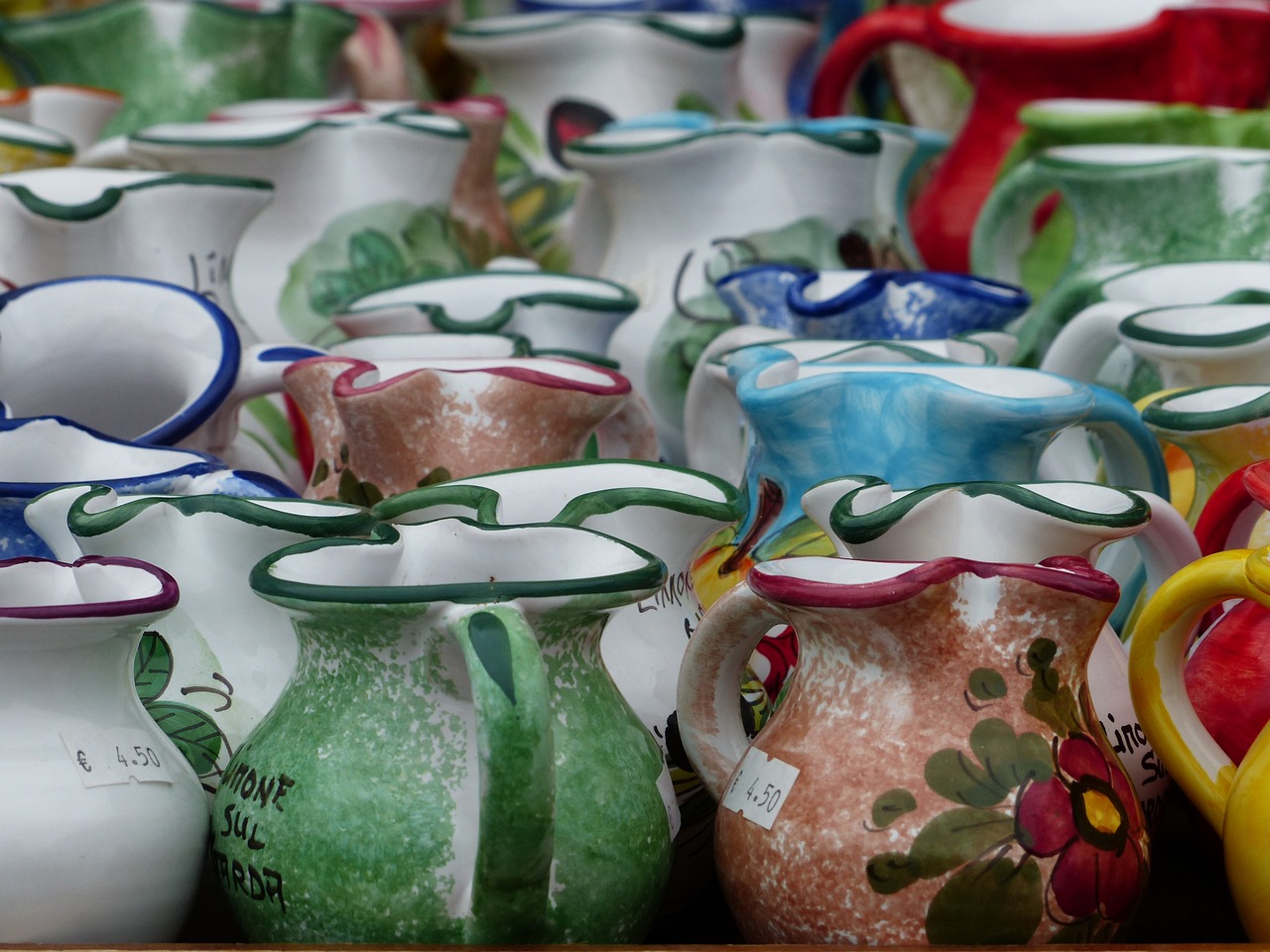
Earthenware vs. Stoneware
When it comes to pottery, earthenware and stoneware are two of the most commonly used types of clay, each with its own unique characteristics and applications. Understanding the differences between them can help you appreciate the craftsmanship involved in pottery making and choose the right type for your needs. Let's dive into the world of these two fascinating materials!
Earthenware is known for its porous nature and is typically fired at lower temperatures, usually between 1,830°F to 2,200°F (1,000°C to 1,200°C). This type of clay is often used for decorative pieces, terracotta pots, and everyday tableware. One of the most appealing aspects of earthenware is its ability to absorb glazes and colors, allowing for vibrant finishes. However, because earthenware is more fragile and less waterproof, it may not be the best choice for items that require durability.
On the other hand, stoneware is fired at higher temperatures, generally between 2,190°F to 2,600°F (1,200°C to 1,400°C). This results in a denser and more durable product that is less porous than earthenware. Stoneware is well-suited for functional items like dinnerware, bakeware, and storage containers, as it can withstand greater thermal shock and is often dishwasher and microwave safe. The smooth finish of stoneware also makes it a popular choice for artists who want to create intricate designs that stand the test of time.
| Feature | Earthenware | Stoneware |
|---|---|---|
| Firing Temperature | 1,830°F to 2,200°F (1,000°C to 1,200°C) | 2,190°F to 2,600°F (1,200°C to 1,400°C) |
| Porosity | More porous | Less porous |
| Durability | Less durable | More durable |
| Common Uses | Decorative items, terracotta pots, tableware | Dinnerware, bakeware, storage containers |
In summary, both earthenware and stoneware have their own unique benefits and drawbacks, making them suitable for different applications. Whether you prefer the vibrant colors and artistic flair of earthenware or the robust functionality of stoneware, there’s no denying the artistry involved in creating pottery from these materials. So next time you admire a beautifully crafted pot or dish, take a moment to appreciate the type of clay that brought it to life!
- What is the main difference between earthenware and stoneware? The primary difference lies in their firing temperatures and porosity, with earthenware being more porous and fired at lower temperatures compared to the denser, higher-fired stoneware.
- Can earthenware be used for cooking? While some earthenware is designed for cooking, it is generally less durable than stoneware and may not withstand high temperatures as well.
- Is stoneware safe for the dishwasher? Yes, most stoneware is dishwasher safe, making it a convenient option for everyday use.
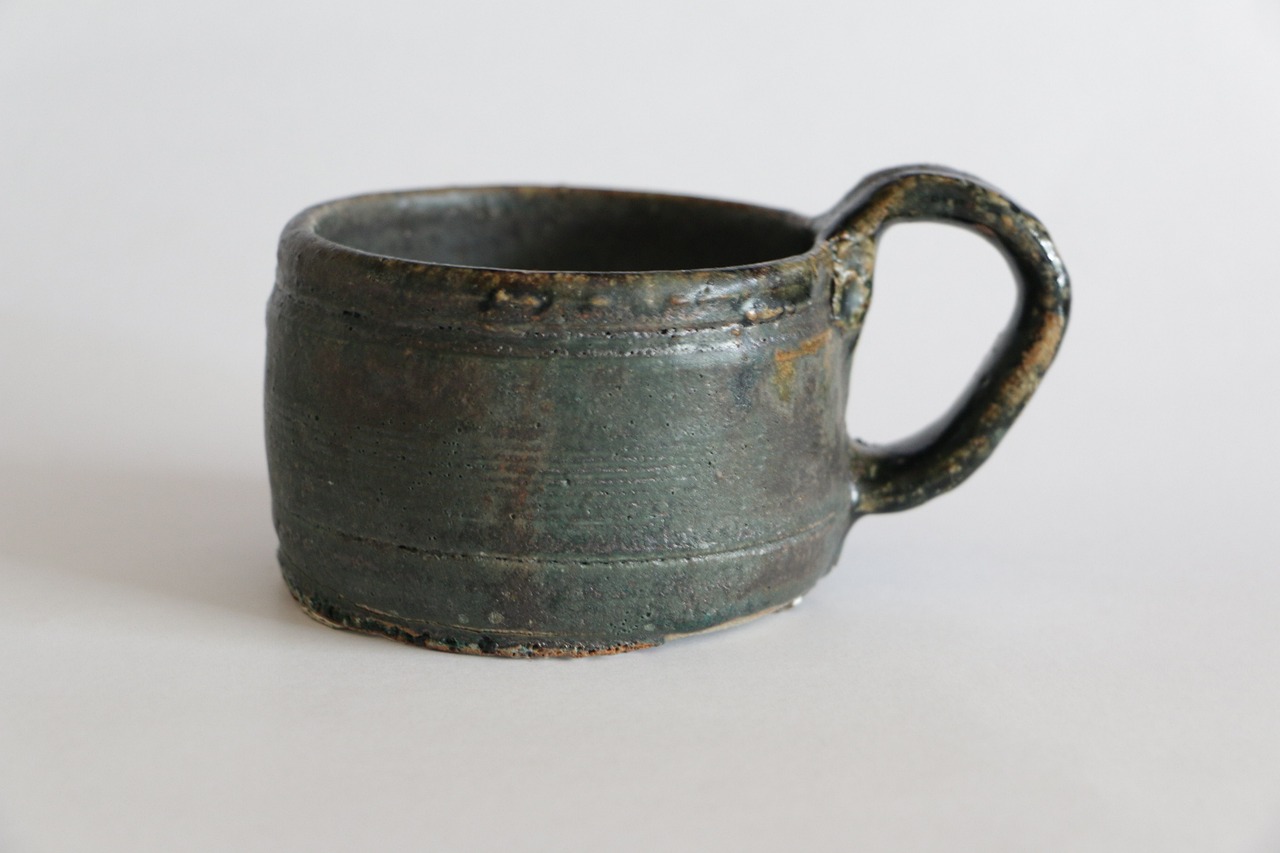
Porcelain: The Fine Art
Porcelain is often regarded as the epitome of fine craftsmanship in the world of pottery. Originating from China, this exquisite material has captivated artisans and collectors alike for centuries. What sets porcelain apart from other types of clay is its unique composition and the high firing temperatures required during its creation. Typically made from a mixture of kaolin, feldspar, and quartz, porcelain is known for its translucent quality and delicate beauty, making it a favorite for both functional ware and decorative art pieces.
The process of creating porcelain is a meticulous journey that demands both skill and patience. Initially, the raw materials are carefully blended to achieve the desired consistency. Once the clay is prepared, it undergoes a process known as throwing or hand-building, where artisans shape the clay into intricate forms. After shaping, the pieces are dried and then fired in a kiln at temperatures exceeding 1200 degrees Celsius. This intense heat not only solidifies the clay but also enhances its strength and durability.
One of the most fascinating aspects of porcelain is its ability to be decorated with various techniques. Artisans often employ methods such as
- Under-glaze painting - where designs are painted on the clay before glazing.
- Over-glaze painting - which involves applying paints on top of the glaze after firing.
- Transfer printing - a technique that uses printed designs transferred onto the porcelain surface.
Historically, porcelain has held immense cultural significance, especially in Asian societies. It was once considered a luxury item, often reserved for the elite. The blue-and-white porcelain of the Ming dynasty, for example, is celebrated worldwide for its stunning aesthetic and historical value. Today, porcelain continues to be a symbol of elegance and sophistication, finding its place in both traditional settings and modern design.
As we delve deeper into the world of porcelain, it becomes evident that this medium is not just about creating beautiful objects. It embodies a rich history, a cultural narrative, and an artistic journey that has evolved over time. From its ancient origins to its contemporary applications, porcelain remains a testament to the enduring human spirit of creativity and innovation.
- What is the difference between porcelain and stoneware?
Porcelain is fired at higher temperatures than stoneware, resulting in a denser and more translucent material. While both are durable, porcelain is typically more delicate and often used for fine dining. - Can porcelain be used in the microwave?
Yes, most porcelain items are microwave-safe, but it’s essential to check for any metallic decorations that may not be microwave-friendly. - How do I care for porcelain dishes?
To maintain the beauty of porcelain, wash it with gentle dish soap and avoid abrasive cleaners. Hand washing is recommended to prevent chipping.
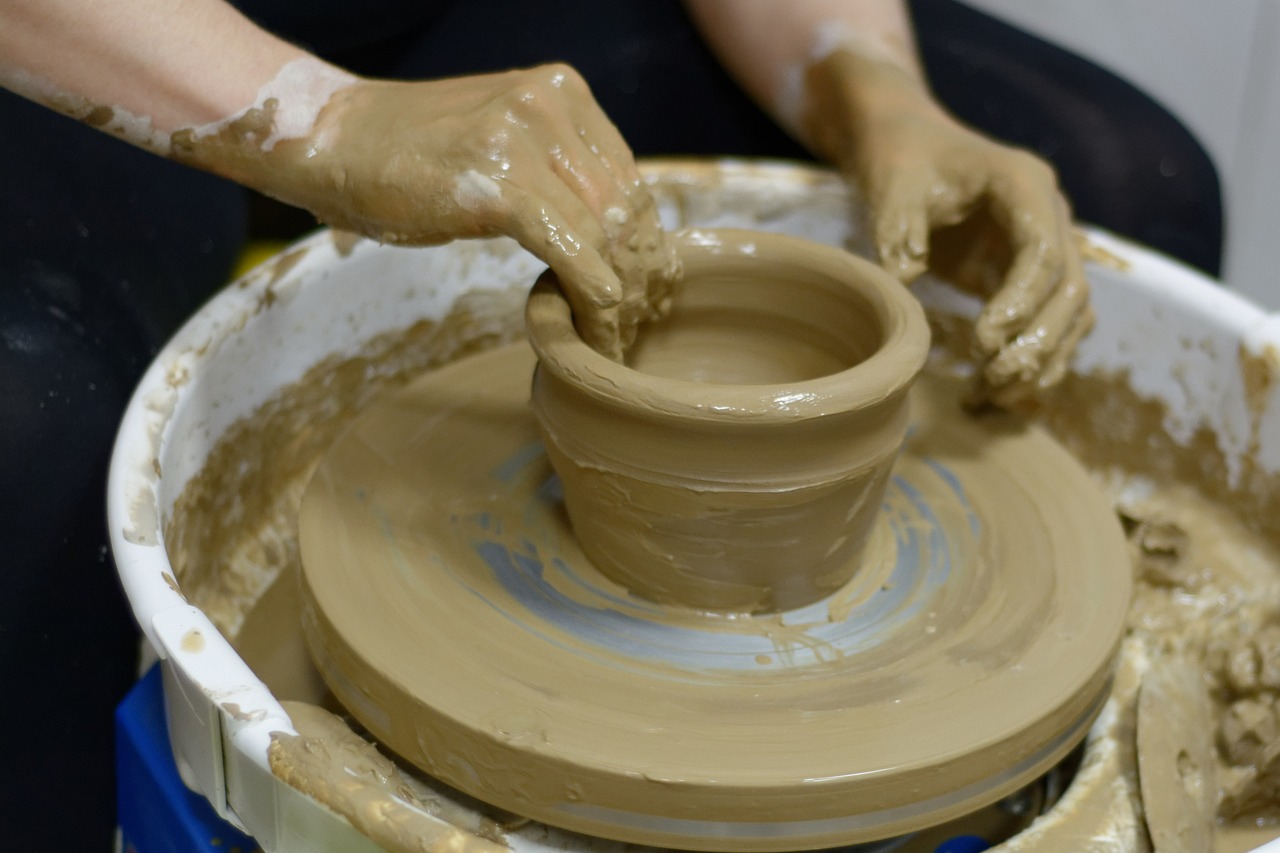
Glazing Techniques
When it comes to pottery, are where the magic truly happens. Glaze is more than just a pretty coat; it serves multiple purposes, including protecting the clay body, enhancing the aesthetic appeal, and even adding functionality. Imagine a beautiful vase that not only looks good but is also waterproof and durable—that’s the power of a well-applied glaze!
There are several methods artisans use to apply glaze, each offering unique results. Some of the most common glazing techniques include:
- Dipping: This method involves immersing the pottery piece into a container of glaze. It’s quick and allows for even coverage, but it requires a steady hand to avoid drips and runs.
- Brushing: Using a brush to apply glaze gives the artist control over the application. This technique is ideal for intricate designs and allows for layering different colors.
- Spraying: A more modern technique, spraying glaze can create soft, even coats. It’s particularly useful for larger pieces, but it requires specialized equipment.
- Pouring: Similar to dipping, pouring involves pouring glaze over the piece. This method can create beautiful effects, especially when combined with other techniques.
Each of these techniques can produce vastly different results depending on the type of glaze used and the firing process. For example, a matte glaze might give a soft, muted finish, while a glossy glaze can make colors pop and add a reflective quality. The choice of glaze is crucial, as it can alter the entire character of the piece.
Moreover, the firing temperature plays a significant role in how the glaze behaves. Some glazes are designed for high-fire kilns, while others are suitable for low-fire applications. This is where the artistry of pottery truly shines—knowing which glaze to use and how it will react in the kiln can make or break a piece.
In addition to traditional glazes, contemporary potters are experimenting with new materials and techniques. For instance, under-glazing involves applying colored slips before the final glaze, allowing for intricate designs that remain visible after firing. This technique can add depth and complexity to the artwork, showcasing the potter's creativity.
Ultimately, glazing is an essential part of the pottery-making process, blending art and science in a way that transforms raw clay into stunning works of art. As potters continue to innovate and push the boundaries of traditional techniques, the possibilities for creativity in glazing are virtually limitless.
Q: What is the purpose of glazing in pottery?
A: Glazing serves to protect the pottery, enhance its appearance, and make it functional, such as waterproofing vases and dishes.
Q: Can you mix different glazes?
A: Yes, many potters experiment with mixing glazes to create unique colors and textures, but it’s essential to test them first to see how they interact during firing.
Q: What are the differences between low-fire and high-fire glazes?
A: Low-fire glazes are typically more vibrant and suitable for decorative pieces, while high-fire glazes are more durable and used for functional pottery.
Q: How do I choose the right glaze for my pottery?
A: The choice of glaze depends on the desired finish, the type of clay used, and the firing temperature of your kiln. Experimenting with different glazes can lead to exciting results!
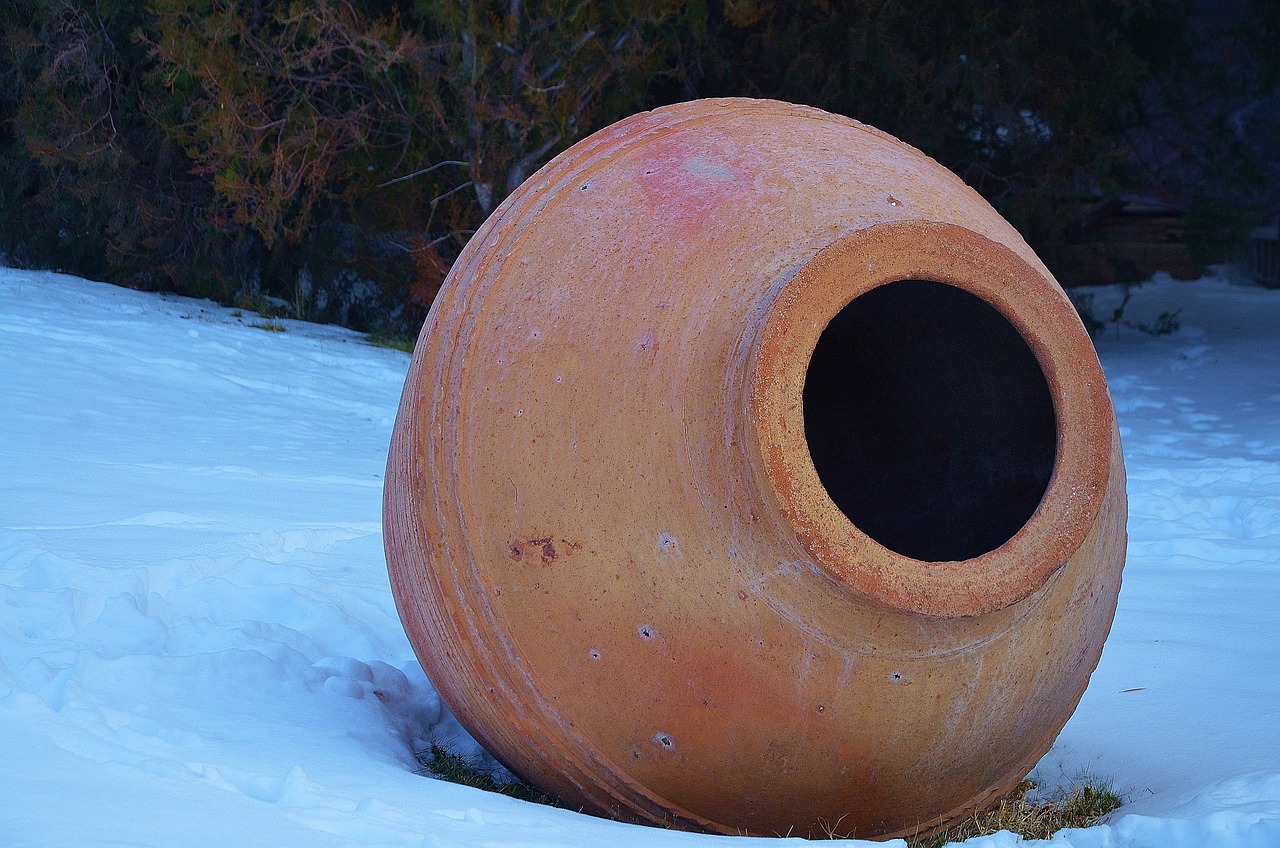
Traditional Pottery Techniques
When it comes to the art of pottery making, traditional techniques are the backbone of this ancient craft. These methods have been passed down through generations, each adding a unique touch to the pottery of their culture. From the simple yet effective hand-building techniques to the intricate mastery of wheel-throwing, these practices not only showcase the artisan's skill but also reflect the rich history and cultural significance behind each piece.
One of the most fascinating aspects of traditional pottery is the hand-building methods. This technique is as old as pottery itself and involves creating forms without the use of a potter's wheel. Artisans often use their hands and simple tools to shape the clay into various forms. There are several hand-building techniques, such as:
- Pinch Pots: This is the most basic technique where the potter pinches the clay into shape, often resulting in unique, organic forms.
- Coil Building: Here, long rolls of clay are coiled on top of each other to create larger vessels. This method allows for more intricate designs and shapes.
- Slab Construction: This technique involves rolling out flat slabs of clay and joining them together to form structures. It’s perfect for creating angular shapes and designs.
On the other hand, wheel-throwing is a technique that requires a great deal of precision and practice. The potter uses a spinning wheel to shape the clay, which allows for symmetrical and intricate designs. The process begins with centering the clay on the wheel, a skill that can take years to master. Once centered, the potter can pull the clay upwards and shape it into various forms, from bowls to vases. The challenge lies in maintaining balance and ensuring that the piece is uniform. It’s a dance of sorts, where the potter must be in tune with the rhythm of the wheel and the clay.
Each of these traditional techniques not only highlights the artisan's creativity but also the cultural heritage they represent. For instance, different cultures have developed their own unique styles and methods, influenced by the materials available to them and the specific needs of their communities. This diversity enriches the world of pottery, making it a fascinating subject to explore.
In conclusion, traditional pottery techniques are more than just methods of crafting; they are a testament to human creativity and cultural identity. Whether through the tactile experience of hand-building or the rhythmic motion of wheel-throwing, each technique offers a glimpse into the history and artistry that has shaped pottery over millennia.
Q: What is the difference between hand-building and wheel-throwing?
A: Hand-building involves shaping the clay by hand without a wheel, while wheel-throwing uses a spinning wheel to create symmetrical forms.
Q: Can I use any type of clay for traditional pottery techniques?
A: No, certain techniques work better with specific types of clay. For example, earthenware is often used for hand-building, while stoneware is preferred for wheel-throwing due to its durability.
Q: How long does it take to master pottery techniques?
A: Mastery varies from person to person, but it can take years of practice to become proficient in either hand-building or wheel-throwing.
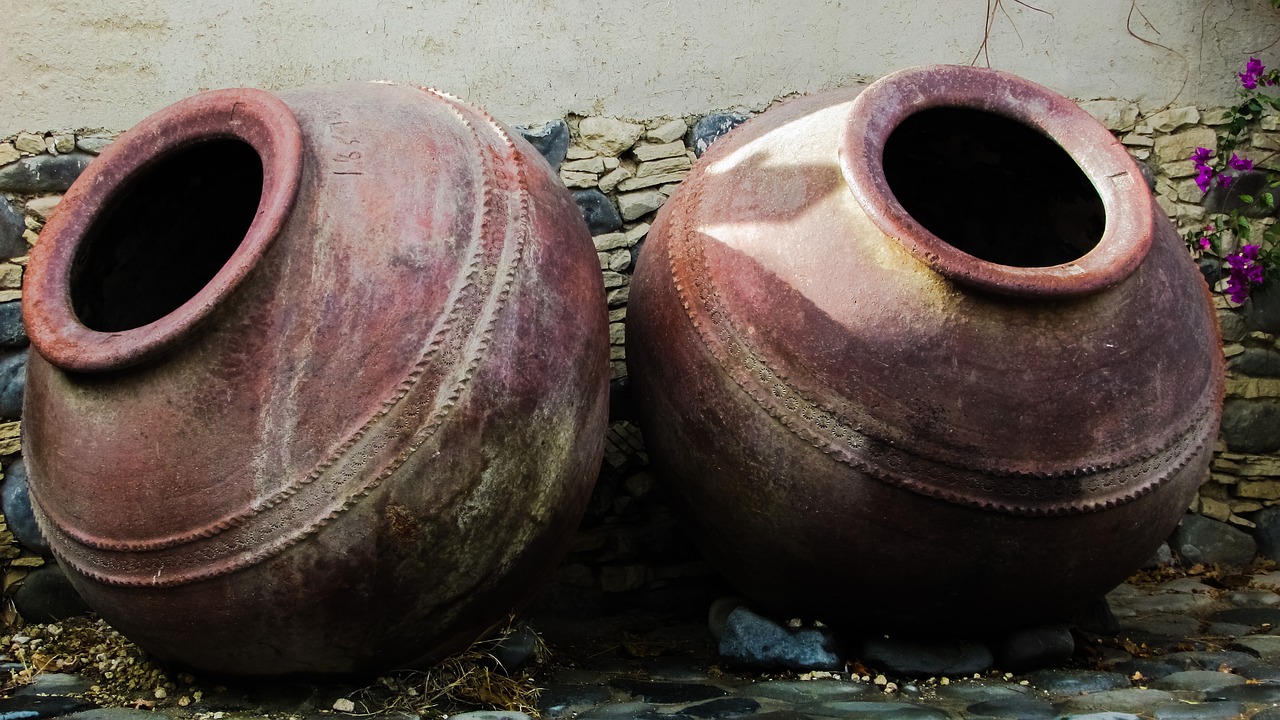
Hand-Building Methods
Hand-building is one of the oldest and most intuitive methods of pottery making, allowing artists to mold and shape clay with their hands rather than relying on a potter's wheel. This technique not only fosters creativity but also connects the potter to the material in a profound way. Imagine the feeling of cool, damp clay slipping between your fingers as you create something uniquely yours. It’s a tactile experience that many find deeply satisfying.
There are several popular hand-building methods that artisans use, each with its own distinct characteristics and charm. Here are three primary techniques:
- Pinch Pots: This method involves taking a ball of clay and pinching it into shape, allowing for a variety of forms and sizes. Pinch pots are often one of the first projects for beginners, as they require minimal tools and can yield beautiful results with just a bit of practice.
- Coil Building: In this technique, long rolls of clay, or coils, are stacked and blended together to form the walls of a pot. This method allows for greater height and complexity in designs, making it perfect for creating larger, more intricate pieces.
- Slab Construction: Slab building involves rolling out flat pieces of clay, which are then cut and assembled to create shapes. This method is fantastic for creating geometric forms and can be used to make everything from simple plates to elaborate sculptures.
Each of these methods requires a different skill set and offers unique opportunities for expression. For instance, pinch pots are often more organic in shape, while coil-built pots can achieve a more structured appearance. Slab construction, on the other hand, opens up a world of possibilities for creating functional items like dinnerware or decorative tiles.
Moreover, hand-building techniques encourage experimentation. Artists can mix and match methods to develop their own signature styles. For example, a potter might start with a coil base and then finish the piece with slab accents, creating a stunning juxtaposition of textures. This blend of techniques is where the magic happens, as it allows for personal expression and innovation.
In addition to the creative aspect, hand-building also promotes mindfulness. The slow, deliberate process of shaping clay can be a meditative experience, allowing potters to focus their thoughts and channel their emotions into their work. As they mold the clay, they are not just creating functional objects; they are crafting pieces of art that tell a story.
In conclusion, hand-building methods are a vital part of pottery making that celebrates both tradition and innovation. Whether you're a seasoned potter or a curious beginner, exploring these techniques can lead to a deeper appreciation of this ancient craft. So why not grab some clay and give it a try? You might just discover a new passion!
1. What tools do I need for hand-building pottery?
Most hand-building techniques require minimal tools. Basic tools include a rolling pin, a knife or cutting tool, and a sponge for smoothing edges. As you progress, you may want to invest in specialized pottery tools, but starting simple is perfectly fine.
2. Can I combine different hand-building techniques?
Absolutely! Many potters find that combining techniques leads to unique and interesting results. For example, you can use coil building for the base and add slab elements for decoration.
3. Is hand-building suitable for beginners?
Yes! Hand-building is often recommended for beginners since it does not require a potter's wheel and allows for more freedom in shaping the clay. It's a great way to learn the basics of working with clay.
4. How long does it take to learn hand-building techniques?
The learning curve varies for each individual, but with practice, many people can create beautiful pieces within a few sessions. The key is to be patient and enjoy the process!
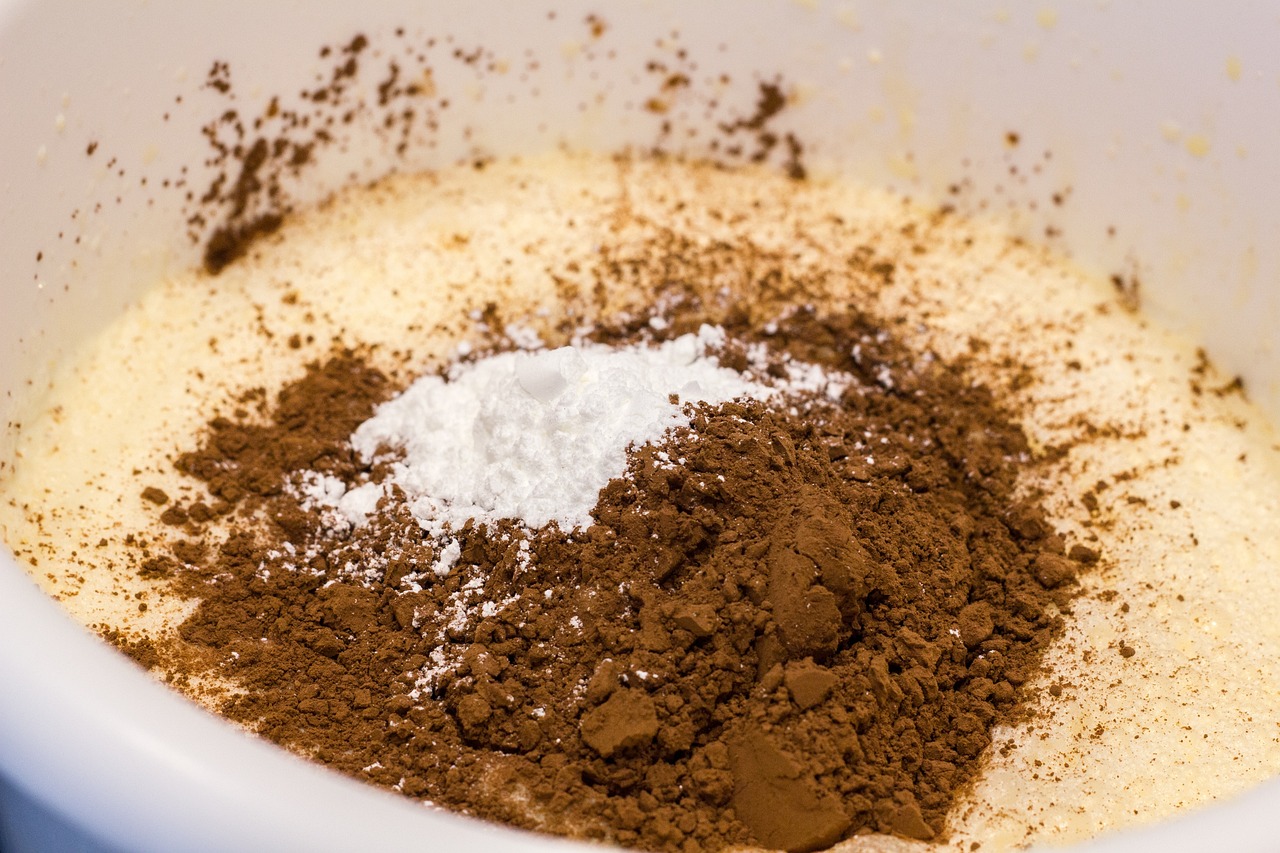
Wheel-Throwing Mastery
Wheel-throwing is not just a technique; it’s an art form that requires a unique blend of skill, patience, and a deep understanding of the materials involved. Imagine sitting at a potter’s wheel, the clay spinning beneath your hands, each rotation offering the promise of creation. This process transforms a lump of clay into a beautifully crafted piece of art, but it is not without its challenges. Mastering wheel-throwing involves not only physical dexterity but also a keen eye for form and proportion.
At its core, wheel-throwing is all about balance and control. The potter must learn to center the clay on the wheel, a crucial first step that sets the stage for the entire creation process. Once the clay is centered, the potter can begin to shape it, pulling the walls upward and outward. This requires a delicate touch and an intuitive understanding of how the clay responds to pressure. It’s almost like dancing, where every movement must be in harmony with the rhythm of the wheel.
The journey of mastering wheel-throwing can be broken down into several stages, each with its own set of challenges:
- Centering the Clay: This is the foundation of wheel-throwing. If the clay isn’t centered, the entire piece will be uneven.
- Opening the Clay: Once centered, the potter creates a well in the middle, which will become the base of the pot.
- Pulling Up the Walls: This step involves lifting the clay upwards to form the desired shape, requiring both strength and finesse.
- Shaping: At this stage, the potter can add details and refine the design, turning a simple vessel into a work of art.
- Trimming: After the piece has dried to a leather-hard state, trimming helps refine the foot and remove any excess clay.
Practice is the key to success in wheel-throwing. Many potters spend years honing their skills, experimenting with different techniques and styles. The learning curve can be steep, but the rewards are immense. Each piece created on the wheel tells a story, reflecting the potter's journey and the unique characteristics of the clay used.
Moreover, wheel-throwing is not just about producing functional items; it’s also about expressing creativity. Potters often infuse their personalities into their work, whether through the shape of the vessel, the choice of glaze, or the incorporation of intricate designs. This artistic expression transforms utilitarian objects into cherished pieces of art that can be appreciated for generations.
In the modern world, wheel-throwing continues to thrive, with potters experimenting with new techniques and technologies. From combining traditional methods with contemporary designs to utilizing eco-friendly materials, the art of wheel-throwing is evolving while still honoring its rich heritage. The sound of the wheel spinning, the feel of the clay, and the satisfaction of creating something beautiful—these elements keep the tradition alive and relevant.
What is wheel-throwing? Wheel-throwing is a pottery technique where a potter shapes clay on a rotating wheel, allowing for the creation of symmetrical and intricate designs.
How long does it take to master wheel-throwing? Mastering wheel-throwing can take years of practice. Beginners may start with simple forms and gradually work towards more complex pieces.
What types of pottery can be made using wheel-throwing? A variety of pottery can be created using this technique, including bowls, vases, and mugs, each offering different challenges and opportunities for creativity.
Is wheel-throwing suitable for beginners? Yes, many pottery classes offer wheel-throwing sessions for beginners. With guidance and practice, anyone can learn this beautiful craft!
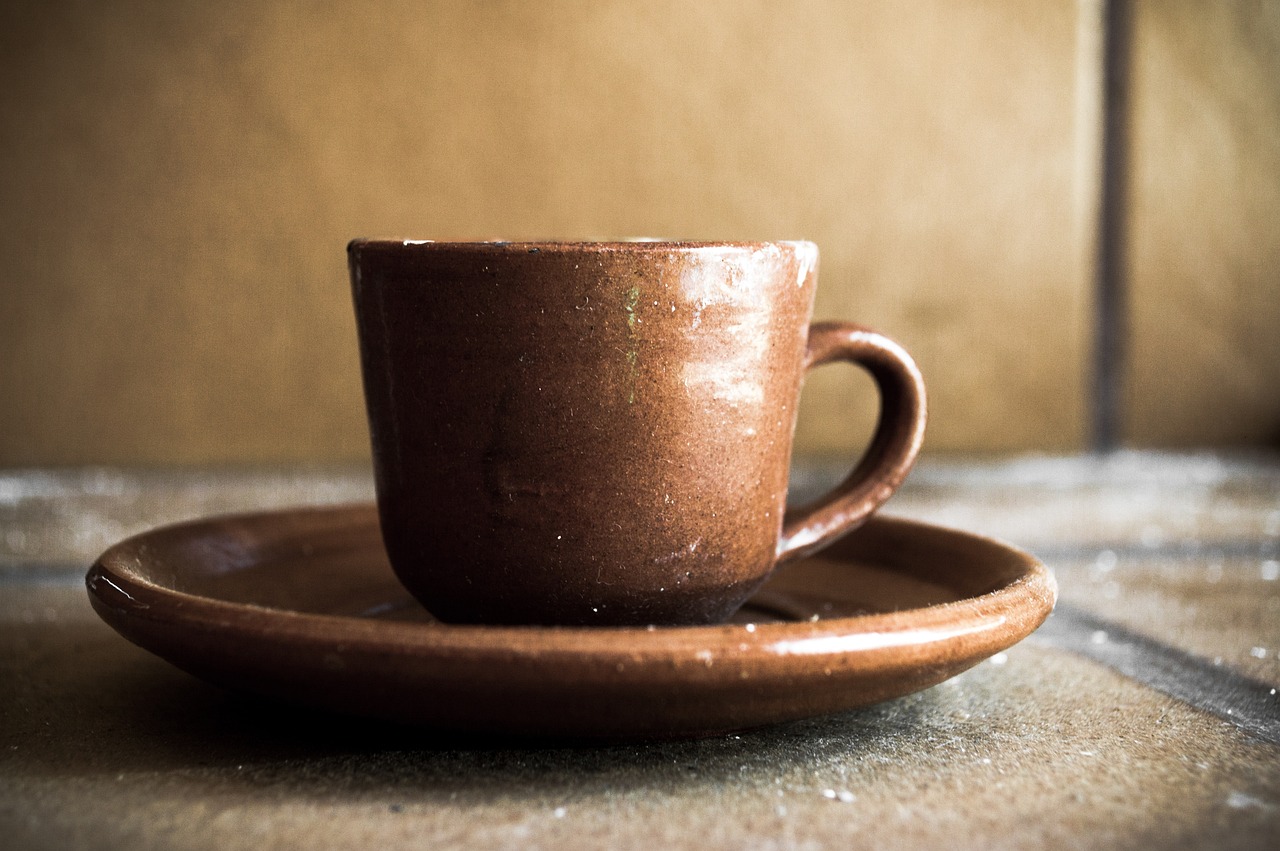
The Cultural Significance of Pottery
Pottery is much more than just a collection of clay objects; it’s a vibrant reflection of cultural identity and a testament to the rich tapestry of human history. Across various societies, pottery serves as a medium through which traditions, beliefs, and social values are expressed. For many cultures, the act of creating pottery is intertwined with rituals and ceremonies, making it an essential part of their heritage. From the intricate designs found in Native American pottery to the elegant forms of Japanese ceramics, each piece tells a story about the people who crafted it, their environment, and their way of life.
In many communities, pottery is used in significant rituals and ceremonies. For instance, in some African cultures, pottery is integral to wedding ceremonies, where beautifully crafted pots are exchanged as symbols of love and unity. Similarly, in ancient Greece, pottery was not only functional but also served as a canvas for storytelling, depicting myths and legends that were crucial to the cultural fabric of society. These artistic expressions found on pottery pieces provide invaluable insights into the values, beliefs, and daily lives of past civilizations.
Moreover, pottery plays a vital role in preserving cultural heritage. Artisans often use traditional techniques passed down through generations, ensuring that the knowledge and skills associated with pottery making are not lost. This preservation of techniques is crucial as it maintains a connection to the past, allowing contemporary society to appreciate and learn from the artistry of previous generations. In many cases, pottery serves as a teaching tool, where younger generations can learn about their ancestors' lifestyles, values, and the significance of their craft.
To illustrate the cultural significance of pottery, consider the following examples:
- Mexican Talavera Pottery: Known for its vibrant colors and intricate patterns, Talavera pottery is often used in festive celebrations, showcasing the rich cultural heritage of Mexico.
- Chinese Porcelain: Revered for its beauty and strength, Chinese porcelain has not only been a symbol of status but also a significant trade item that reflects the cultural exchanges along the Silk Road.
- Native American Pottery: Each tribe has its unique style and symbolism in their pottery, often reflecting their beliefs and connection to nature.
As we delve deeper into the world of pottery, it becomes evident that it is an art form that transcends mere utility. It embodies the essence of a culture, encapsulating its history, beliefs, and artistic expression. The significance of pottery continues to resonate today, as many artists draw inspiration from traditional practices while also innovating to reflect contemporary issues and aesthetics.
| Question | Answer |
|---|---|
| What is the oldest known pottery? | The oldest known pottery dates back to around 20,000 years ago and was found in China. |
| How does pottery reflect cultural identity? | Pottery reflects cultural identity through its designs, materials, and techniques that are unique to specific cultures and traditions. |
| What modern techniques are used in pottery today? | Modern techniques include 3D printing, new glazing methods, and the use of eco-friendly materials. |
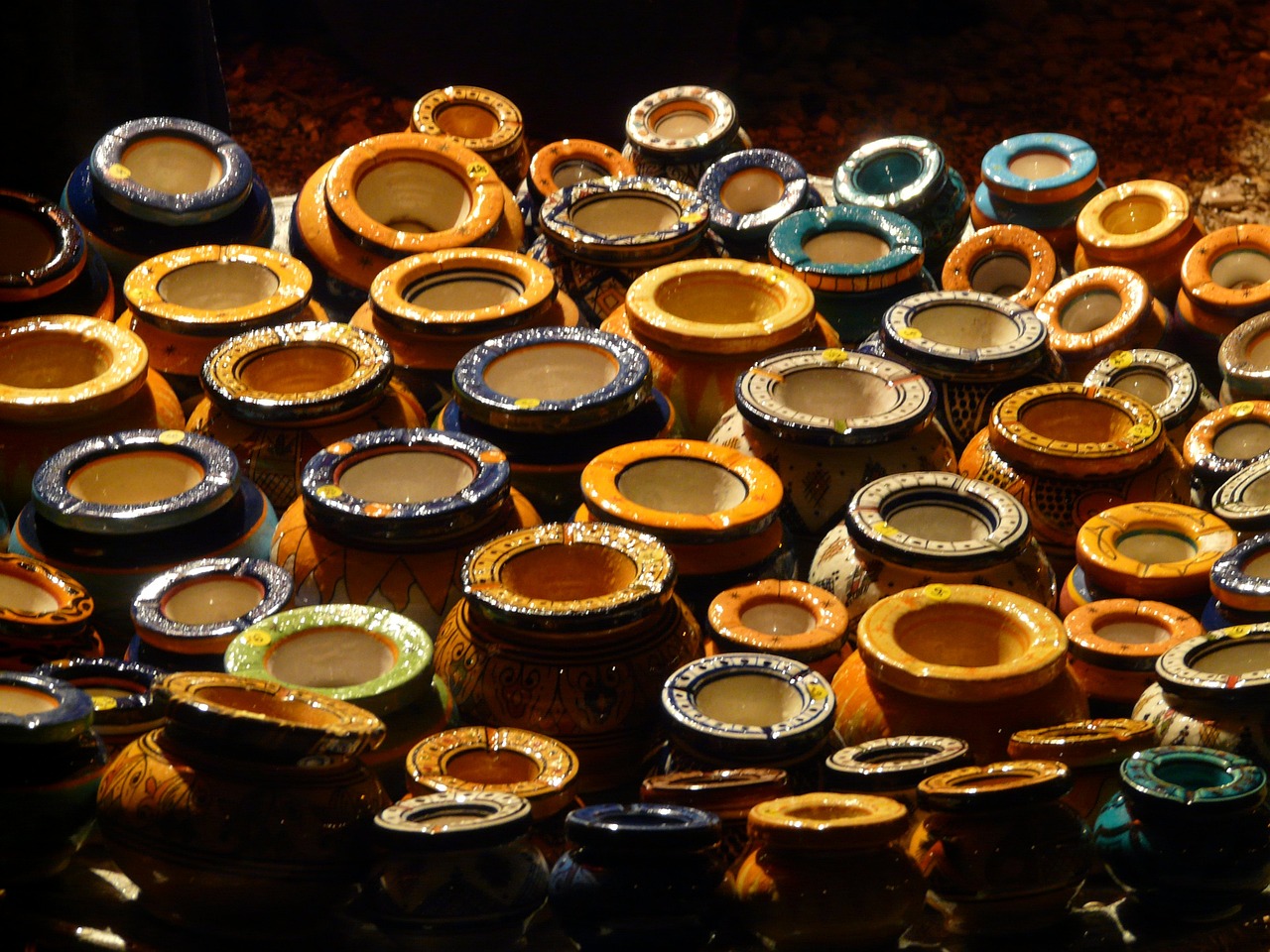
Pottery in Rituals and Ceremonies
Throughout history, pottery has held a profound place in various rituals and ceremonies, serving as a tangible connection to cultural identity and spiritual beliefs. In many societies, pottery is not just a functional object; it embodies the essence of tradition, storytelling, and communal values. From ancient burial practices to modern-day celebrations, the role of pottery is both diverse and significant.
For instance, in many Indigenous cultures, pottery is intricately linked to ceremonial practices. The creation of specific vessels often involves rituals that honor the earth and the materials used. These artisans may chant or meditate while crafting their pieces, infusing them with spiritual energy. Such practices highlight the belief that the act of making pottery is a sacred endeavor, connecting the creator to their ancestors and the natural world.
One of the most notable examples of pottery in rituals is seen in wedding ceremonies. In various cultures, couples may use specially crafted pottery to symbolize their union. For instance, in some African traditions, couples might drink from a shared pot, signifying their commitment to one another. This act transforms a simple vessel into a powerful symbol of love and partnership.
Additionally, pottery is often used in religious ceremonies. In many cultures, sacred vessels are created to hold offerings or to be used in rituals. For example:
- In Hinduism, clay pots filled with water are used during rituals to purify and bless the space.
- In Christianity, pottery may be used during baptism or communion, representing the body and blood of Christ.
- In Native American cultures, ceremonial pots often play a role in spiritual practices, holding items that are significant to their beliefs.
The artistic designs on these ceremonial pieces often carry deep meanings, reflecting the stories, myths, and values of the culture. Potters might incorporate symbols that represent fertility, prosperity, or protection, making each piece a unique narrative. The colors and patterns used can also signify different aspects of life, such as the changing seasons or the cycles of life and death.
Moreover, pottery serves as a medium for storytelling, with many pieces featuring intricate designs that depict historical events or cultural legends. These narratives are not just for aesthetic appeal; they serve to educate and pass down knowledge through generations. In this way, pottery becomes a vessel of history, preserving the cultural heritage of communities.
In conclusion, pottery in rituals and ceremonies goes beyond mere functionality. It is a powerful expression of cultural identity, spirituality, and communal bonds. As we continue to celebrate these traditions, we honor the artisans who dedicate their lives to this ancient craft, ensuring that the stories and values of their cultures are preserved for future generations.
- What is the significance of pottery in different cultures?
Pottery often reflects cultural identity, traditions, and rituals, serving both functional and symbolic purposes in various societies. - How do artisans incorporate spirituality into pottery making?
Many artisans engage in rituals during the pottery-making process, such as chanting or meditating, to infuse their work with spiritual significance. - What types of ceremonies commonly use pottery?
Pottery is frequently used in weddings, religious ceremonies, and cultural rituals, often symbolizing unity, purity, or protection.
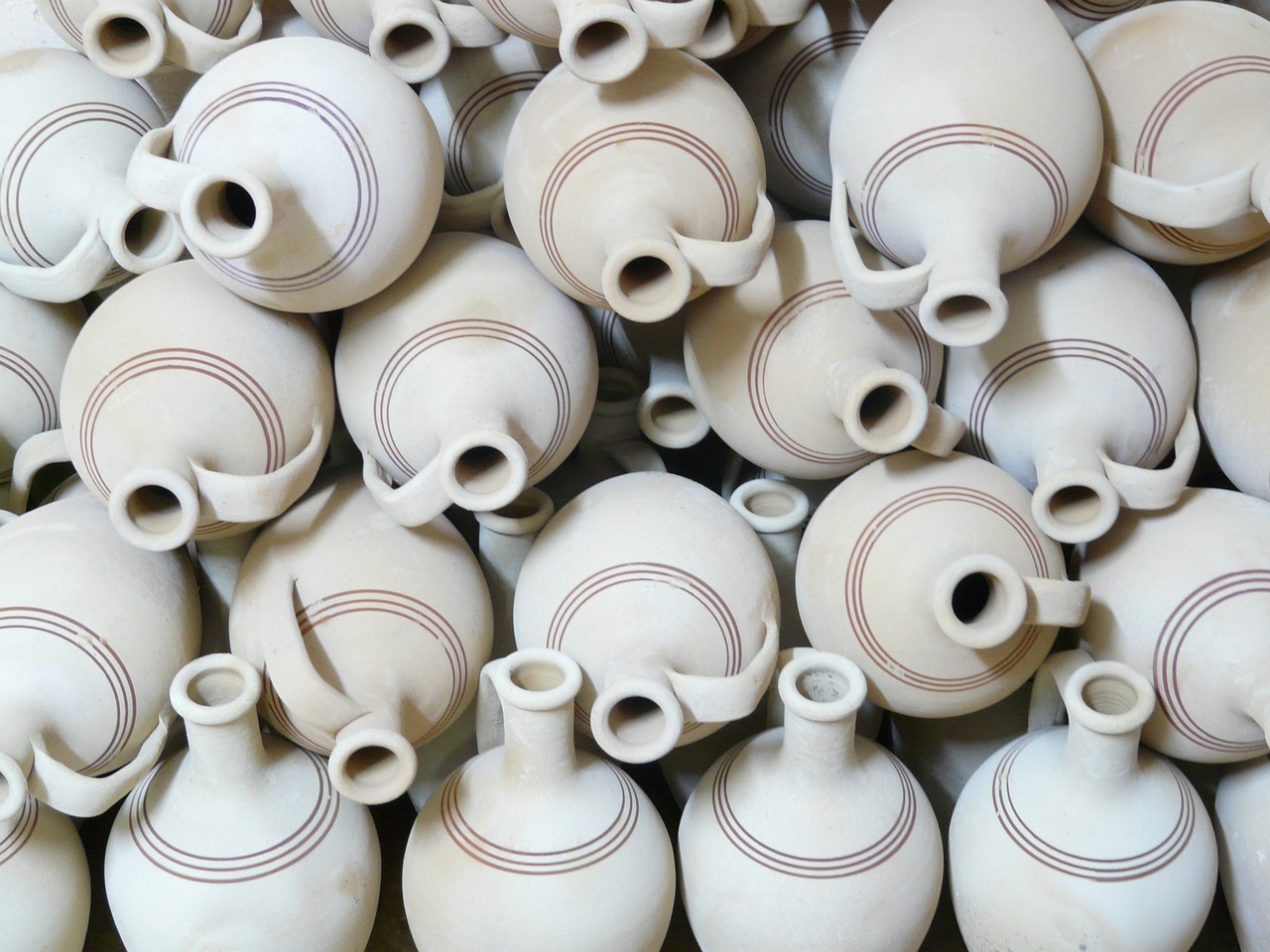
The Influence of Pottery on Art
Pottery is not just about creating functional items; it is a profound expression of cultural identity and artistic innovation. Throughout history, pottery has influenced various art forms, shaping the way artists think about materials, aesthetics, and functionality. From ancient civilizations to contemporary artists, the techniques and designs of pottery have left an indelible mark on the art world.
One of the most fascinating aspects of pottery's influence on art is how it has served as a bridge between craftsmanship and fine art. In many cultures, pottery was initially viewed as a utilitarian craft, but over time, it evolved into a respected art form. This transformation can be seen in various movements, such as the Arts and Crafts Movement in the late 19th century, which celebrated handmade pottery as a counter to industrialization. Artists began to explore the aesthetic possibilities of clay, leading to unique styles and forms that challenged traditional notions of art.
Furthermore, pottery has inspired countless artists across different mediums. For instance, the textural qualities and vibrant glazes of ceramic pieces have influenced painters and sculptors alike. Artists like Pablo Picasso and Henry Moore drew inspiration from the shapes and forms of pottery, integrating these elements into their own work. The tactile nature of pottery encourages a hands-on approach, fostering a deeper connection between the artist and their medium.
In contemporary art, pottery continues to play a significant role. Many modern artists are blending traditional pottery techniques with innovative concepts, creating works that challenge the boundaries of what pottery can be. This fusion of old and new is evident in the work of artists who use clay to explore themes of identity, culture, and sustainability. The dialogue between pottery and other art forms is ongoing, with each influencing the other in exciting ways.
Moreover, pottery has also inspired various artistic movements, such as studio pottery, where individual potters create unique works that reflect their personal style and philosophy. This movement emphasizes the artist's hand and the uniqueness of each piece, contrasting with mass-produced ceramics. Studio potters often incorporate elements from other art forms, such as painting and sculpture, into their work, further blurring the lines between pottery and fine art.
In summary, the influence of pottery on art is profound and multifaceted. It has shaped artistic practices, inspired countless artists, and continues to evolve in the contemporary art scene. Pottery serves as a testament to the enduring connection between function and form, reminding us that even the most practical objects can hold deep artistic significance.
- What is the significance of pottery in art history?
Pottery has played a crucial role in the evolution of art, acting as a bridge between functionality and artistic expression. It has influenced various art movements and inspired countless artists throughout history. - How does pottery influence contemporary art?
Contemporary artists often blend traditional pottery techniques with modern concepts, creating works that challenge the boundaries of both pottery and fine art. This ongoing dialogue continues to enrich the art world. - Can pottery be considered fine art?
Yes, pottery can be considered fine art, especially when it emphasizes the artist's creativity and individuality. Movements like studio pottery highlight the artistic value of handmade ceramic works.
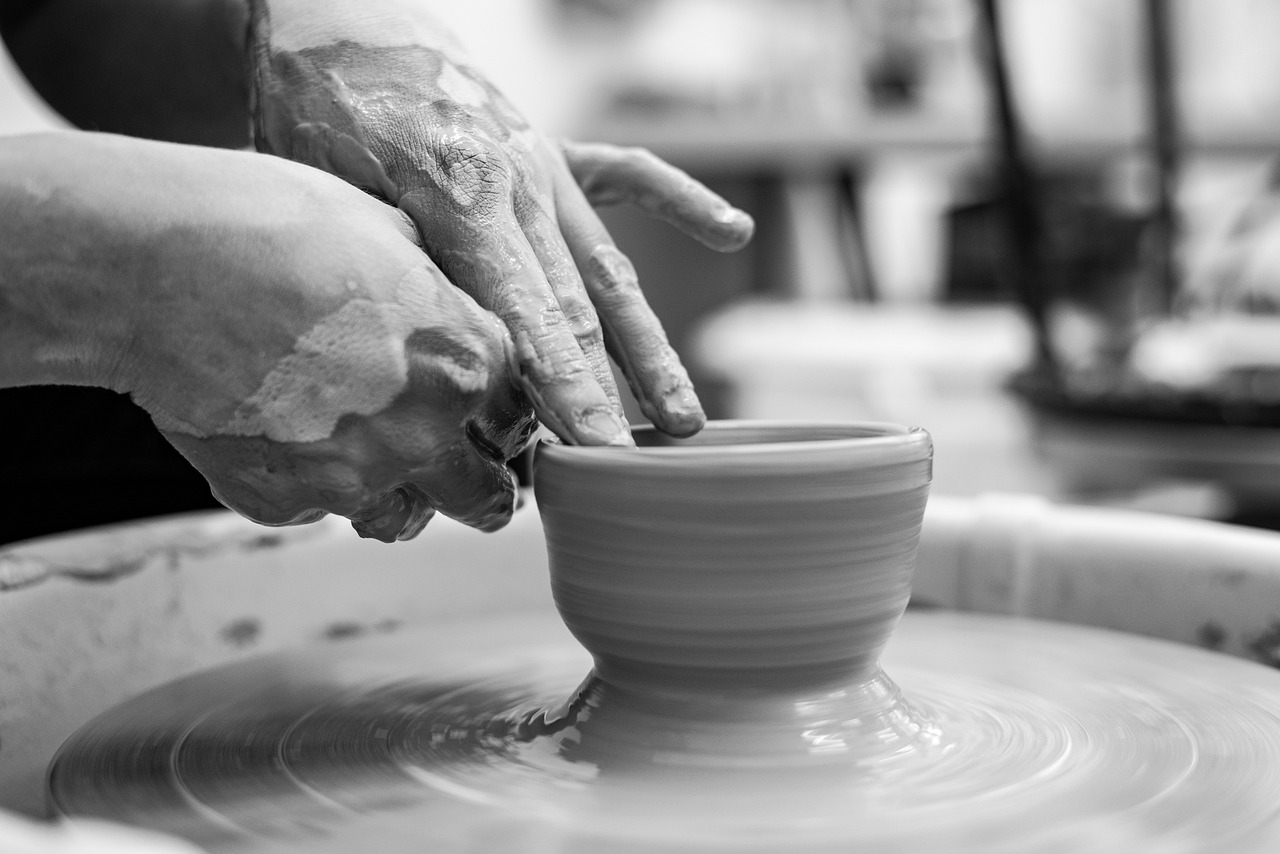
Modern Innovations in Pottery
In today's fast-paced world, the age-old craft of pottery is undergoing a remarkable transformation. With the integration of modern technologies, artisans are not only preserving traditional techniques but also pushing the boundaries of creativity and functionality. One of the most exciting advancements in this field is the use of 3D printing. Imagine being able to design a complex ceramic piece on a computer and then watch as a machine brings that design to life layer by layer. This technology allows for intricate patterns and structures that would be nearly impossible to achieve by hand, opening up a whole new realm of possibilities for potters.
Moreover, 3D printing is not just about aesthetics; it also enhances efficiency in production. Artisans can create prototypes quickly, test their designs, and make adjustments without the time-consuming process of traditional methods. This means that artists can experiment more freely, leading to innovative pieces that blend art and technology seamlessly.
But the evolution of pottery doesn't stop there. The increasing awareness of environmental issues has led to a surge in the use of eco-friendly materials. Many contemporary potters are now sourcing sustainable clays and glazes, reducing their carbon footprint while still producing beautiful work. For instance, some artisans are using recycled materials, such as glass and paper, to create unique textures and finishes. This shift not only promotes sustainability but also encourages a dialogue about the importance of responsible crafting practices in the art community.
In addition, the rise of digital tools has revolutionized the way potters approach their craft. Software programs allow artists to simulate glazing techniques and even visualize how their pieces will look in different environments before they even start working with clay. This technological advancement can save time and resources, allowing potters to focus on the creative aspects of their work rather than the trial and error of traditional methods.
As we look to the future, it's clear that the fusion of technology and traditional pottery techniques is set to redefine the craft. The ability to innovate while honoring the past is what makes modern pottery so exciting. Artisans are not just creating functional items; they are telling stories, expressing emotions, and challenging the norms of art and design. The pottery of tomorrow promises to be as diverse and dynamic as the cultures it represents, ensuring that this ancient tradition remains vibrant and relevant in our contemporary society.
- What is 3D printing in pottery? 3D printing in pottery refers to the use of additive manufacturing technology to create ceramic pieces layer by layer, allowing for intricate designs and faster prototyping.
- How are eco-friendly materials used in pottery? Eco-friendly materials in pottery include sustainable clays, recycled glass, and other natural substances that minimize environmental impact while maintaining aesthetic quality.
- Can modern technology replace traditional pottery techniques? While modern technology enhances pottery making, it is unlikely to replace traditional techniques completely. Instead, it complements them, allowing artisans to innovate while respecting age-old practices.
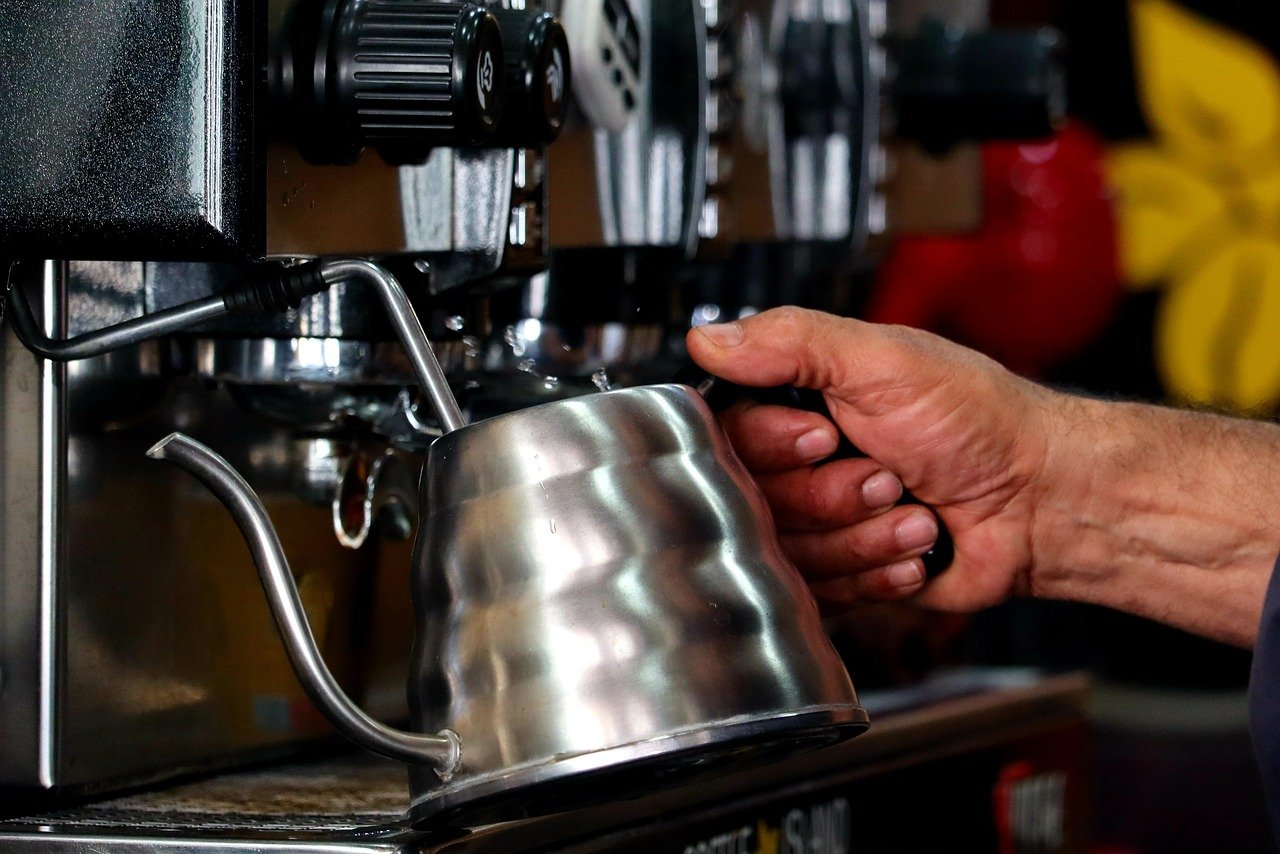
3D Printing in Pottery
In recent years, 3D printing has emerged as a groundbreaking technology in the world of pottery, revolutionizing the way artisans create their works. Imagine a world where traditional methods meet cutting-edge technology; that’s precisely what 3D printing offers to potters today. It allows for intricate designs and shapes that were once limited by the physical capabilities of manual techniques. With a 3D printer, artists can produce complex forms that challenge the boundaries of conventional pottery.
The process begins with a digital design, which is then transformed into a tangible object layer by layer. This method not only increases efficiency but also opens up a realm of possibilities for customization. Potters can experiment with forms that are challenging to achieve by hand, leading to a new wave of artistic expression. For example, the ability to create geometric patterns or organically flowing shapes is now at the fingertips of artisans, enabling them to push the envelope of creativity.
However, integrating 3D printing into pottery is not without its challenges. The choice of materials is crucial, as the clay must be suitable for the printing process. Many potters are now exploring a variety of 3D printing clays that can withstand the rigors of firing while maintaining the desired aesthetic qualities. Additionally, the technology requires a learning curve; artisans must familiarize themselves with software and printing techniques, which can be daunting at first.
Despite these hurdles, the benefits of 3D printing in pottery are undeniable. Here are some key advantages:
- Precision: 3D printing allows for exceptional accuracy, ensuring that each piece is consistent and true to the design.
- Customization: Artists can easily modify designs to create unique, one-of-a-kind pieces tailored to individual tastes.
- Efficiency: The speed of production is significantly enhanced, allowing potters to create more pieces in less time.
As we look to the future, the fusion of traditional pottery techniques with modern technology like 3D printing represents an exciting frontier. It’s a testament to the enduring nature of pottery, proving that even ancient crafts can adapt and thrive in a rapidly changing world. With this innovation, potters are not just preserving their art form; they are redefining it, ensuring that pottery remains relevant and vibrant for generations to come.
Q: Can 3D printing replace traditional pottery methods?
A: While 3D printing offers new possibilities, it is unlikely to completely replace traditional methods. Instead, it serves as a complementary technique that can enhance creativity and efficiency.
Q: What materials are used in 3D printing pottery?
A: Various types of clay specifically formulated for 3D printing are used, along with other materials that can withstand firing processes.
Q: Is 3D printed pottery durable?
A: Yes, when printed with the right materials and properly fired, 3D printed pottery can be just as durable as traditionally made pieces.
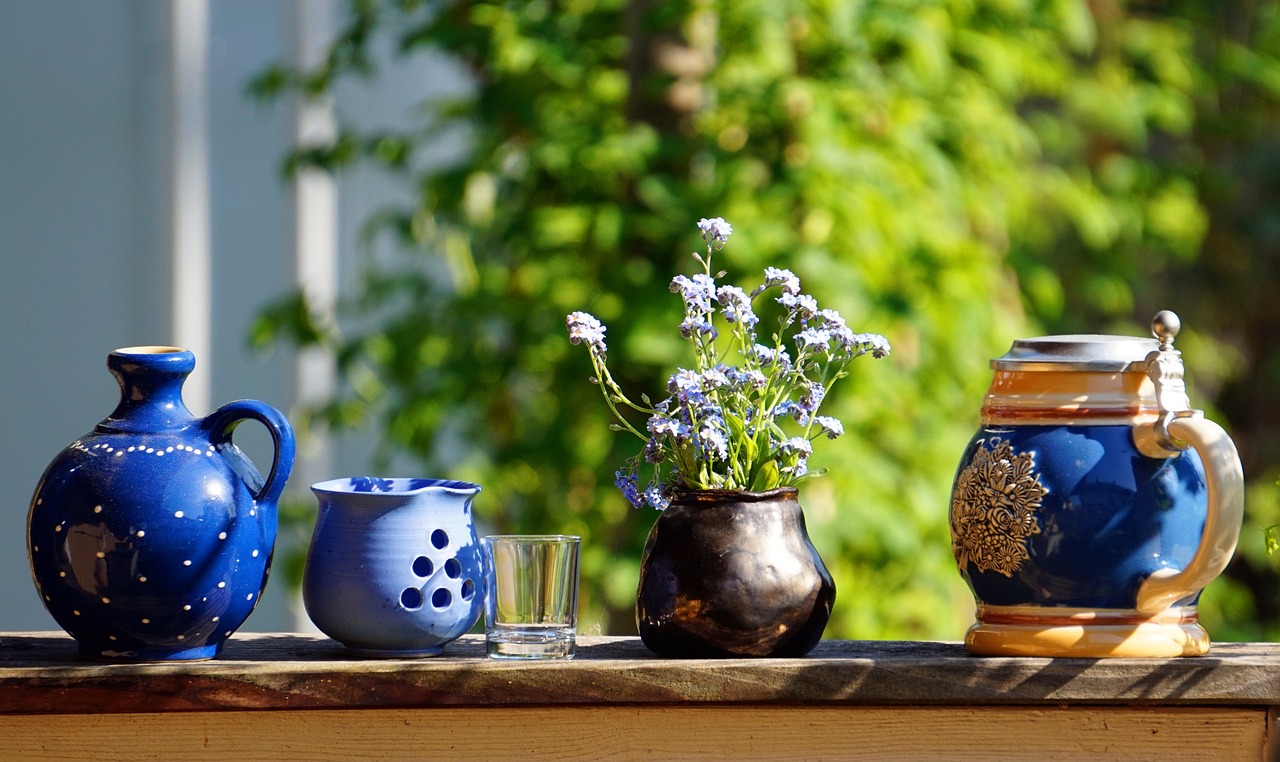
Eco-Friendly Materials
In an age where sustainability is not just a trend but a necessity, pottery making is embracing eco-friendly materials with open arms. Artisans are now more conscious than ever about the environmental impact of their craft. By utilizing sustainable resources, they are not only preserving the planet but also enhancing the beauty and uniqueness of their creations. Eco-friendly materials can range from natural clays to organic glazes, each contributing to a greener approach to pottery.
One of the most significant shifts in pottery making is the adoption of natural clays. Unlike conventional clays that may contain harmful additives, natural clays are sourced directly from the earth, ensuring that no toxic substances are introduced into the environment. This not only benefits the artisan but also the end user, as these materials are safer for everyday use. Additionally, many potters are exploring the use of recycled materials, such as reclaimed clay and glass, which significantly reduces waste and promotes a circular economy.
Furthermore, glazes have also seen a transformation. Traditional glazes often contained harmful chemicals, but today, many artisans are opting for organic glazes made from natural minerals and plant-based ingredients. These glazes not only provide stunning finishes but also align with eco-conscious practices. For instance, the use of ash glazes, derived from wood ash, not only gives a unique texture and color to pottery but also minimizes waste by repurposing materials that would otherwise be discarded.
Moreover, the tools and processes used in pottery making are evolving. Many artisans are now employing handmade tools crafted from sustainable materials, reducing reliance on mass-produced items. Some are even turning to solar energy for firing kilns, which dramatically cuts down on carbon emissions. This holistic approach to pottery making not only fosters creativity but also reinforces a commitment to environmental stewardship.
In summary, the integration of eco-friendly materials in pottery making is a testament to the craft's evolution. By prioritizing sustainability, artisans are not only creating beautiful pieces but also paving the way for a more responsible future in the arts. As consumers become increasingly aware of their choices, supporting potters who embrace these practices is a step towards a more sustainable world.
- What are eco-friendly materials in pottery?
Eco-friendly materials in pottery include natural clays, organic glazes, and recycled resources that minimize environmental impact. - How do eco-friendly practices benefit pottery artisans?
These practices allow artisans to create unique, safe products while promoting sustainability and reducing waste. - Can I find eco-friendly pottery in stores?
Yes, many artisans and stores now offer eco-friendly pottery options. Look for labels or inquire about their materials. - What is the significance of using organic glazes?
Organic glazes are safer for health and the environment, providing beautiful finishes without harmful chemicals.
Frequently Asked Questions
- What is the history of pottery making?
Pottery making dates back thousands of years, with its origins found in early human civilizations. It reflects the creativity and resourcefulness of ancient cultures as they crafted functional and artistic objects from clay. The evolution of pottery techniques showcases how societies adapted to their environments and expressed their identities through this timeless art form.
- What types of clay are used in pottery?
There are several types of clay used in pottery, each with unique properties. The most common types include earthenware, stoneware, and porcelain. Earthenware is known for its porous nature and is typically fired at lower temperatures, while stoneware is more durable and fired at higher temperatures. Porcelain, often regarded as the finest type of clay, is celebrated for its delicate beauty and strength.
- What are some traditional pottery techniques?
Traditional pottery techniques vary widely across cultures. Some of the most notable methods include hand-building, wheel-throwing, and slip-casting. Hand-building allows for creative expression through pinch pots, coil building, and slab construction, while wheel-throwing requires skill and precision to create symmetrical forms. Each technique has its own unique charm and challenges.
- How does pottery reflect cultural identity?
Pottery is more than just functional art; it serves as a canvas for cultural expression. Each piece often embodies the traditions, rituals, and social values of the community that created it. Ceremonial pottery, for instance, plays a significant role in various cultural practices, showcasing how pottery can connect us to our heritage and collective identity.
- What modern innovations are changing pottery making?
Modern innovations, such as 3D printing and eco-friendly materials, are reshaping the pottery landscape. 3D printing allows for intricate designs that were previously difficult to achieve, while the use of sustainable materials promotes environmental responsibility among artisans. These advancements are helping pottery evolve while still honoring its rich traditions.
- Can pottery be considered an art form?
Absolutely! Pottery is often regarded as a form of art due to the creativity and skill involved in its creation. The aesthetic qualities of pottery, including shape, color, and texture, contribute to its artistic value. Many contemporary artists incorporate pottery techniques into their work, blurring the lines between functional objects and visual art.



















